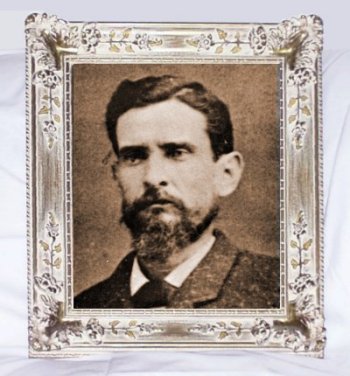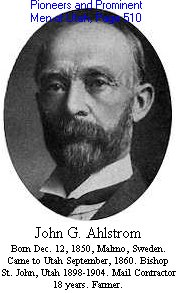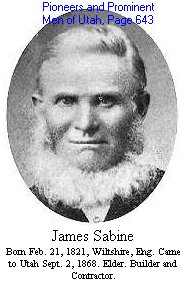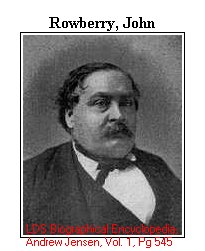|
THE LIFE SKETCH OF GEORGE WILCOX BURRIDGE (Part 15 As seen by others) Written by his grand-daughter, Ann M. Neddo
|
|||||||||
|
Part 1 1805 - 1831 Youth Part 2 1831 - 1847 Army Part 3 1847 Courtship & Marriage Part 4 1847 - 1852 Marriage, Baptism and the End of a Career Part 5 1853 - 1855 Isle of Malta mission Part 6 1855 - Going to Zion Part 7 1855 - 1857 Hard times Part 8 1857 - 1860 (?) Johnson's army and back to Rush Valley Part 9 1866 - 1867 Patriarchal blessings, Mission call and departure Part 10 1867 Journey to the British mission Part 11 1867 - Mission Part 12 1868 - Mission Part 13 1868 - Return Home Part 14 1868 - 1888 Bishop, Storekeeper, and Iindians - oh my Part 15 As seen by others Part 16 1880 -1888 The culmination of a lifetime Part 17 1888 -1891 Patriarch and Death Part 18 Miscellaneous |
It soon became an established yearly event for the Burridge family to play host to a Thanksgiving Dinner for all the poor of the ward. Each member of the family doing their best to make it a success. The Grand-children who were old enough also lent a hand in cleaning and polishing, adding their share to the savory odors which filled the house clear to the attic. Whenever the Burridge's entertained, which they did very often, in fact few were the meals served just to the family, George always inspected the setting of the table to see that the girls spread the white cloth with the smoothly ironed side up and that the silver was polished and shining. They had delightful evenings. Reading, singing and talking. Many of the visiting church workers brought their music and instruments and then the home was full of lovely melodies while voices rose and blended with the music.
These men and women were friends until death parted them. As the years passed respect for each other grew as did the love they felt for each other. The culture and refinement of life found a ready student in George. He joined the Library Association in Salt Lake City thus keeping his family supplied with good reading. He took members of his family into the City to concerts and dramas, at the old Salt Lake Theatre and the Mormon Tabernacle. He took a magazine that always had beautiful steel cut pictures which were the best art available for his family to become acquainted with and enjoy. His interests led him to carve in native stone the inscription for over the door in a new meeting house which was built in 1883. When the town of St. John became property of the United Sates George as Bishop of the town filed on the entire townsite thus ensuring all the people the right to own, their own city lots. [Editor's note - There is a common misconception that George "owned" all of Rush Valley, owing to the fact that his name appears on all the deeds.] The first yoke of oxen that George purchased were named Milo and Barlow, after the Andrus brothers. These men considered it an insult to have great oxen called by their names. So George was brought before a teacher's trial. There he convinced them he had named his oxen to honor the men, they were such fine men and the oxen were an extra fine team of cattle. [Editor's note - at that time in Church history, the teachers' quorum was not the 14 - 16 year-old boys we see today, but a quorum of men charged with "maintaining order in the Church".]
George never missed a general Conference if he could help it. At times when he had no other means of transporation if he had been working his team hard, or they were needed for some important job, he packed his clothes in a sack and walked the fifty miles to Salt Lake Tabernacle to Conference. After being thrilled and edified and refreshed he took the long walk back full of the Gospel.
|
||||||||
| About this site |
GEDCOM files
|
Other stories
|
| Reunion news |
||
|
Family Newsletter |
George's diaries
|
|



